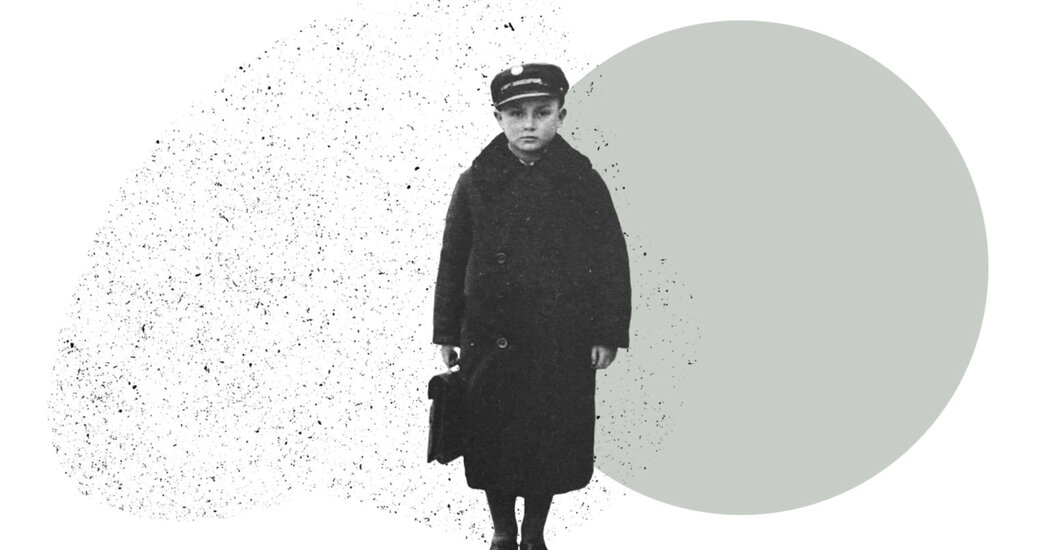It has not had the impact of Anne Frank’s classic journal, but another teenager’s diary from World War II has long provided a vivid picture of the miseries of life in a Jewish ghetto and the striking ways its doomed inhabitants endured.
Now, beginning on July 17, the YIVO Institute for Jewish Research in Manhattan will focus attention on the diary of the teenager, Yitskhok Rudashevski, by making it the second installment in what the institute calls its “online museum” of Jewish history.
In June 1941, at age 13, Yitskhok, began chronicling daily life in Vilnius, Lithuania (Vilna in Yiddish). He recorded the German army’s takeover of the city from its Soviet occupiers, depicting the confinement of Vilnius’s 55,000 Jews into two ghettos and documenting the first reports of systematic massacres at the forested suburb of Ponar, where ultimately 70,000 Jews, 8,000 Soviet prisoners of war and 2,000 Polish intelligentsia were shot or machine gunned to death by Nazi “einsatzgruppen” killing squads and Lithuanian volunteers.
Yitskhok was murdered at Ponary in October 1943. His cousin located the diary, written in Yiddish, in an attic hideaway and gave it to the poet Abraham Sutzkever, who had rescued scores of precious books, manuscripts and letters from YIVO’s original library in Vilna. The diary has been exhibited before, most prominently in a Hebrew translation at Yad Vashem in Israel, but not in a complete English text and not with a new translation by Solon Beinfeld.
Alexandra Zapruder, the co-curator of the online exhibition said the diary was notable among 85 Holocaust diaries by Jewish teenagers for its youthful eloquence.
“He was an extraordinary literary talent,” she said, “Having read dozens of teenage diaries, very few meet this level of literary ability, command of language and spirit of observation.”
The diary differs from Anne Frank’s, Ms. Zapruder said, because it details the broad narrative of a city’s Jews while Anne’s isolation with family members and others in a “secret annex,” led her to chronicle that claustrophobic experience.
The exhibition, “A Teenager’s Account of Life and Death in the Vilna Ghetto,” will use a variety of materials to explore the diary and its implications, including animation, graphic novels, video dramatizations and other interactive features, the institute said.
Yitskhok’s diary begins with exuberant description of a get-together of his communist youth group, the Pioneers. But their bonhomie is suddenly shattered by the howl of sirens and thud of bombs. Within weeks, Jews are ordered to leave their homes for two ghettos
“It is an image from the Middle Ages,” Yitskhok writes. “ A big black mass of people moves, harnessed to their big bundles. We understand that it will soon be our turn. I look at the disorderly room, at the bundles, at the overwhelmed, despairing people.”
Yitskhok’s family was crammed into an apartment they had to share with other families.
“In addition to the four of us, there are 11 people in the room,” he wrote. “The room is dirty and muddy. It is cramped. The first ghetto night. Three of us lie on two doors. I do not sleep. My ears are filled with the lamentation of this day. I hear the uneasy breathing of the people with whom I have so suddenly been thrown together, people who have suddenly been uprooted from their homes just like me.”
Despite the malnutrition and poor sanitation that inhabitants suffered in the following months, they set up schools, and youth clubs, published a newspaper, arranged an exhibition on a popular poet, and celebrated the 100,000th book borrowed from the ghetto library.
“At nine o’clock we gathered in the kitchen,” he wrote of one social event where a potato kugel (pie) was divvied up. “I look around at those present. All of them our nearest and dearest teachers, friends and comrades. It feels so intimate, so warm, so pleasant. This evening we showed who we are and what we can do.”
“Till late at night we sang along with the adults songs that tell of youthfulness and Hope, he wrote. “We were so happy, so happy.”
“We have shown that it will not be a broken youth that will emerge from the ghetto.”
By April, their fate became clear. News arrived that 85 railway cars filled with 5,000 Jews were taken to Ponary where they were shot to death in pits intended for fuel storage. “The ghetto was profoundly shaken, as if struck by a Thunderclap,” Yitskhok wrote. “The mood of massacre has taken hold of the population.”
“The claws of the hawk have appeared before us again,” he wrote. “People sit confined in a crate and on the other side lurks the enemy, who is preparing to annihilate us in a refined way according to a plan, as today’s massacre has shown.”
